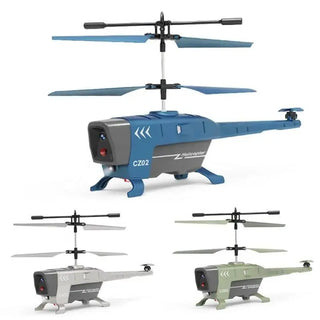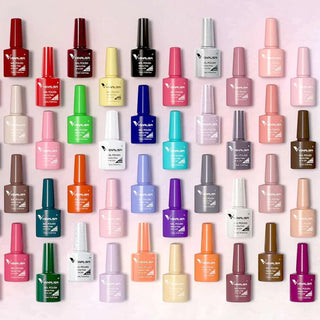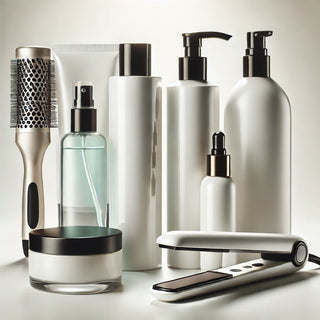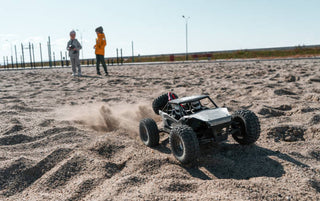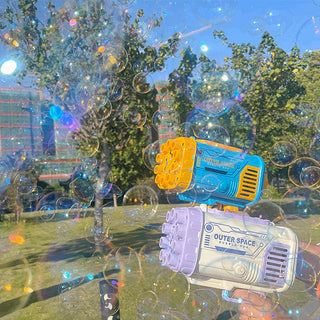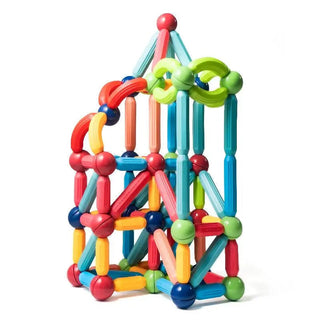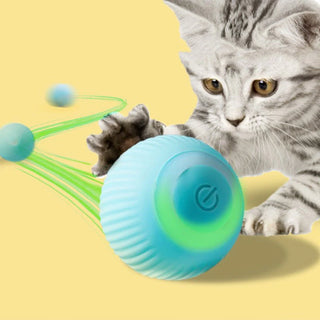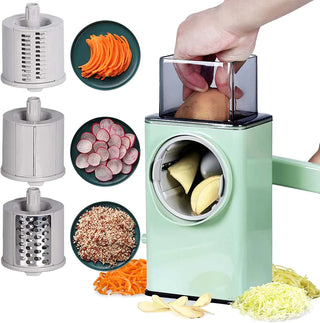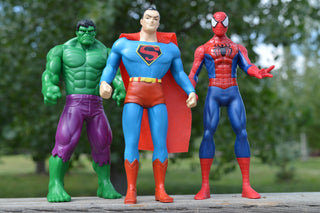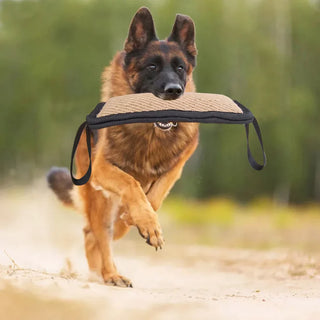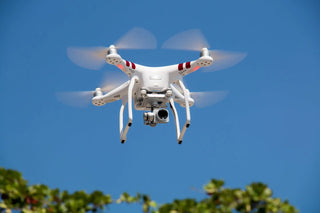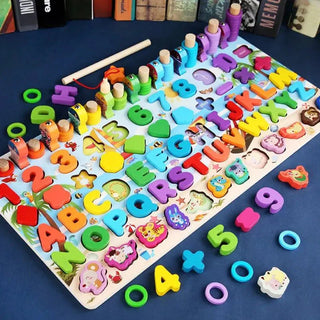RC lowrider cars are a unique blend of creativity and engineering, capturing the essence of car culture in a miniature form. These radio-controlled vehicles not only look great but also offer exciting features like hopping and customization. Whether you're a seasoned hobbyist or just starting out, understanding the basics of RC lowriders can enhance your experience and open up a world of possibilities. In this guide, we'll explore what makes these cars special, the art of hopping, customization options, and the vibrant community surrounding them.
Key Takeaways
- RC lowrider cars combine style and performance, making them a fun hobby for enthusiasts.
- Hopping techniques require practice and understanding of mechanics for the best results.
- Customization is key; you can upgrade chassis, suspension, and aesthetics to make your car truly unique.
- Joining clubs and attending events can enhance your enjoyment and connect you with other fans.
- Regular maintenance is essential to keep your RC lowrider in top shape and performing well.
Understanding RC Lowrider Cars
What Are RC Lowrider Cars?
RC lowrider cars are scaled-down, radio-controlled versions of the full-sized lowrider cars that originated in the Chicano culture of the mid-20th century. These models are built to replicate the look and functionality of their larger counterparts, featuring intricate paint jobs, detailed interiors, and, most importantly, the ability to raise and lower the suspension using remote control. They're not just toys; they're a hobby that combines engineering, artistry, and a love for car culture. People enjoy building, customizing, and showing them off. It's a pretty cool scene.
The History of RC Lowriders
The RC lowrider scene mirrors the evolution of full-size lowriders. It started with enthusiasts wanting to replicate the hydraulic suspension systems in a smaller, more manageable format. Early RC lowriders were often crude, using repurposed parts and basic electronics. As technology advanced, so did the sophistication of RC lowriders. Now, you can find models with fully functional hydraulic systems, custom-made chassis, and incredibly detailed bodies. The history is tied to the real car culture, with many RC builders drawing inspiration from iconic lowriders and customization trends.
Key Features of RC Lowrider Cars
RC lowriders have some features that make them unique. Here are a few:
- Hydraulic Suspension: This is the defining feature. Small hydraulic cylinders allow each wheel to be raised and lowered independently, enabling the hopping and dancing that lowriders are known for.
- Custom Chassis: Many RC lowriders use custom-built or heavily modified chassis to accommodate the hydraulic system and provide the necessary strength and stability.
- Detailed Bodies: The bodies are often replicas of classic cars, with custom paint jobs, chrome accents, and detailed interiors. Attention to detail is key.
RC lowriders are more than just toys; they're a way for people to express their creativity and passion for car culture. The level of detail and craftsmanship that goes into these models is truly impressive. It's a hobby that brings together people from all walks of life, united by their love for lowriders.
Here's a simple comparison of features:
| Feature | Full-Size Lowrider | RC Lowrider |
|---|---|---|
| Suspension | Hydraulic | Hydraulic |
| Scale | 1:1 | 1:10, 1:12, etc. |
| Power Source | Gasoline | Electric |
| Customization | Extensive | Very Extensive |
| Operating Space | Streets | Tabletops, Tracks |
It's interesting to see how much of the real car culture translates into the RC world. You can find custom chassis online if you're looking to build your own.
The Art of Hopping
Mechanics Behind Hopping
So, you wanna make your RC lowrider jump? It's not just about slapping on some hydraulics and hoping for the best. It's a bit more involved than that. The core of hopping lies in the hydraulic system. This system uses a pump to force fluid into cylinders, which then extend and lift the car. The speed and power of the pump, the size of the cylinders, and the weight distribution of the car all play a big role in how high and how well your lowrider hops. You'll also need a good battery to power the pump, and a strong frame to handle the stress of hopping.
Techniques for Effective Hopping
Okay, you've got the hardware, now what? Here are some things to keep in mind:
- Weight Distribution: Adjusting the weight can drastically change your hop. More weight in the rear can help with higher rear hops, but too much can make the car unstable.
- Practice: Seriously, practice makes perfect. Start with small hops and gradually increase the power as you get a feel for how your car responds.
- Controlled Bursts: Don't just slam the switch. Use short, controlled bursts of power to get the best hop without losing control.
Remember, every car is different. What works for one might not work for another. Experiment and find what works best for your setup. Don't be afraid to try different things and see what happens. It's all part of the fun.
Common Mistakes to Avoid
Alright, let's talk about some common pitfalls. I've seen it all, from blown pumps to bent frames. Here's what not to do:
- Overpowering the System: Don't crank up the voltage too high. You'll burn out your pump or blow a cylinder. Trust me, it's not worth it.
- Ignoring Weight Distribution: A poorly balanced car will hop unevenly and can even flip over. Take the time to adjust the weight properly.
- Neglecting Maintenance: Hydraulic systems need love too. Check for leaks, keep the fluid clean, and replace worn parts. Ignoring routine maintenance practices will lead to problems down the road.
Here's a quick table of common issues and possible solutions:
| Issue | Possible Solution |
|---|---|
| Weak Hop | Increase voltage (within safe limits), check pump. |
| Uneven Hop | Adjust weight distribution. |
| System Overheating | Use a lower voltage, add a cooling fan. |
| Hydraulic Fluid Leaks | Check fittings, replace worn seals. |
Customization Options for RC Lowriders
Choosing the Right Chassis
Selecting the correct chassis is the base for any RC lowrider project. The chassis determines the car's overall size, weight distribution, and compatibility with various upgrades. You'll find chassis made from different materials, like plastic, aluminum, and carbon fiber, each offering unique advantages. Aluminum chassis provide increased durability and rigidity, which is important for handling the stress of hopping. Plastic chassis are more budget-friendly and can be suitable for beginners. Carbon fiber is the lightest but also the most expensive, often used for competition builds.
Consider these factors when choosing a chassis:
- Material: Aluminum, plastic, or carbon fiber.
- Size and Scale: Common scales are 1/10, 1/12, and 1/16.
- Compatibility: Ensure it works with your desired suspension and body.
A good chassis provides a solid foundation for all other modifications. It's better to invest in a quality chassis from the start than to deal with issues later on.
Upgrading Suspension Systems
The suspension system is what makes RC lowriders unique. Upgrading it allows for the signature hopping and adjustable ride height. Hydraulic systems are the most popular choice, using oil-filled shocks and pumps to control each wheel independently. Electronic actuators are another option, offering precise control and ease of use. Air suspension systems, while less common, provide a realistic look and feel.
Here's a breakdown of suspension types:
| Suspension Type | Pros | Cons |
|---|---|---|
| Hydraulics | High hopping ability, realistic look | More complex, requires maintenance |
| Actuators | Precise control, easy to use | Can be less durable, less realistic look |
| Air Suspension | Realistic feel, adjustable height | Less common, can be expensive |
To get the most out of your suspension, consider these upgrades: performance parts, stronger springs, and adjustable shocks.
Aesthetic Modifications
Aesthetic modifications are where you can really personalize your RC lowrider. This includes everything from custom paint jobs and body kits to interior detailing and lighting. The goal is to create a unique look that reflects your style. Popular options include:
- Custom Paint: Use airbrushing or spray paint to create unique designs.
- Body Kits: Add fender flares, spoilers, and other body modifications.
- Wheels and Tires: Choose from a wide variety of styles and sizes.
- Lighting: Install LED lights for a cool nighttime effect.
Don't forget the small details! Things like chrome trim, custom decals, and detailed interiors can really make your RC lowrider stand out. Remember to take your time and plan your modifications carefully to achieve the desired look. Consider looking at custom paint jobs for inspiration. Ultimately, the best aesthetic modifications are the ones that make you happy and reflect your personal style.
Popular Brands and Models
RC lowrider cars have carved out a unique niche in the radio control hobby, blending the thrill of remote control vehicles with the artistry of lowrider culture. Several brands have risen to prominence, offering a range of models to suit different skill levels and budgets. Let's explore some of the top players and their offerings.
Top RC Lowrider Brands
When it comes to RC lowriders, a few brands consistently stand out for their quality, innovation, and dedication to the culture. These brands often collaborate with real-life lowrider builders and clubs to ensure authenticity and performance. It's important to do your research and read reviews before committing to a specific brand.
- Tamiya: A well-known name in the RC world, Tamiya offers a solid foundation for lowrider builds with their reliable chassis and readily available parts. They might not be exclusively lowrider-focused, but their platforms are easily adaptable.
- Yeah Racing: This brand specializes in aftermarket parts and accessories, including hydraulics and custom bodies, making them a go-to for serious lowrider enthusiasts. They offer a wide range of options to personalize your ride.
- Kyosho: Another reputable RC manufacturer, Kyosho provides high-quality chassis and components that can be used as a base for creating a custom RC lowrider. Their focus is more on performance, but the quality is undeniable.
Best Models for Beginners
Starting out with RC lowriders can seem daunting, but several models are designed with beginners in mind. These models typically prioritize ease of use, durability, and affordability. They're a great way to learn the basics of RC lowrider operation and customization without breaking the bank. When you're starting out, it's best to look for something that's easy to repair and upgrade. You can find lowrider parts online.
- Pre-built Kits: Some brands offer pre-built RC lowrider kits that include everything you need to get started. These kits are a great option for beginners who want to avoid the hassle of assembling a car from scratch.
- Entry-Level Chassis: Look for chassis that are known for their durability and ease of modification. Tamiya's TT-01 or TT-02 chassis are popular choices for beginners due to their simplicity and wide availability of parts.
- Simple Hydraulic Systems: Start with basic hydraulic systems that are easy to install and operate. Avoid complex setups until you have a better understanding of how they work.
Advanced Options for Enthusiasts
For experienced RC enthusiasts looking to take their lowrider game to the next level, there are plenty of advanced options available. These options often involve custom fabrication, high-performance components, and intricate hydraulic systems. It's all about pushing the boundaries of what's possible and creating a truly unique and impressive RC lowrider. Here are some things to consider:
- Custom Chassis Fabrication: Building a custom chassis from scratch allows you to create a lowrider that perfectly matches your vision. This requires advanced skills and tools, but the results can be stunning.
- High-Performance Hydraulics: Upgrading to high-performance hydraulic pumps, cylinders, and controllers allows for faster, smoother, and more precise hopping action. These systems often require custom tuning and adjustments.
- Detailed Body Modifications: Advanced enthusiasts often spend countless hours perfecting the body of their RC lowriders, adding intricate details such as custom paint jobs, chrome trim, and realistic interiors. This is where the artistry of lowriding truly shines.
Remember that building and maintaining an RC lowrider, especially at an advanced level, requires patience, skill, and a willingness to learn. Don't be afraid to experiment and try new things, but always prioritize safety and responsible operation.
Community and Events
RC lowrider cars aren't just a solo hobby; it's a whole community thing! Getting involved can seriously up your game, introduce you to some cool people, and give you a chance to show off your ride. Plus, who doesn't love a little friendly competition?
Joining RC Lowrider Clubs
Finding a local RC lowrider club is easier than you might think. A quick search online should point you in the right direction. These clubs are awesome because they offer a space to connect with other enthusiasts, share tips and tricks, and even organize group cruises or build sessions. Being part of a club means you're always learning and improving.
Here's what you can expect from most clubs:
- Regular meetings (in person or online)
- Shared resources and knowledge
- Group projects and builds
- Organized events and competitions
Participating in Competitions
Competitions are where things get real. It's a chance to test your skills, show off your custom builds, and see how you stack up against other builders. Don't be intimidated if you're new; most competitions have different classes for skill levels. It's all about having fun and learning. You can find competition details online.
Here are some common competition categories:
- Hopping height
- Best in show (judged on aesthetics)
- Technical challenges (like navigating an obstacle course)
Attending RC Car Shows
RC car shows are like the Comic-Cons of the RC world. They're a great place to see the latest products, meet vendors, and check out some seriously impressive custom builds. Plus, it's a chance to connect with other enthusiasts and get inspired for your next project. I always find some new inspiration at these shows.
RC car shows are more than just a display of vehicles; they're a celebration of creativity and engineering. It's a place where builders can showcase their hard work, share their knowledge, and connect with others who share their passion. It's also a great place to pick up new parts or tools at discounted prices.
Maintenance Tips for Longevity
Let's be real, nobody wants their sweet RC lowrider to end up collecting dust in the garage. Keeping these things running smoothly takes a little effort, but it's worth it to avoid bigger problems down the road. Think of it like taking care of a real car – a little TLC goes a long way.
Routine Maintenance Practices
Okay, so what does "routine maintenance" even mean? It's not rocket science, I promise. Here's a quick rundown:
- Regular Cleaning: Dust and dirt are your enemy. Use a soft brush or compressed air to clean your RC lowrider after each use. Pay special attention to the chassis, suspension, and any moving parts. I usually do this after every run, it takes like 5 minutes.
- Check the Battery: Make sure your battery is in good shape. Don't leave it charging for too long, and store it properly when you're not using it. I had one puff up on me once, not fun. Also, inspect the battery connector for damage.
- Inspect Moving Parts: Look for any signs of wear and tear on the suspension, axles, and gears. If something looks loose or damaged, fix it before it causes bigger problems. A little preventative maintenance can save you a lot of headaches.
- Lubrication: Keep those moving parts lubricated! Use a good quality RC lubricant on the suspension, axles, and gears. This will help them move smoothly and prevent wear and tear. I use a dry lube, it doesn't attract as much dirt.
Troubleshooting Common Issues
Stuff breaks, it's a fact of life. Here are some common problems and how to deal with them:
- Car Won't Turn On: First, check the battery. Is it charged? Is it connected properly? If the battery is good, check the switch and the wiring. Sometimes a wire can come loose. If you're still stuck, it might be the ESC (Electronic Speed Controller).
- Car is Jerky: This could be a sign of a bad motor, a loose connection, or a problem with the ESC. Check the wiring first, then try cleaning the motor. If that doesn't work, you might need to replace the motor or ESC.
- Suspension Issues: If your car isn't hopping right, check the suspension. Are the shocks leaking? Are the springs broken? Replace any damaged parts. Also, make sure the suspension is properly lubricated. I had a suspension system fail on me once, it was a pain to fix.
RC lowriders are complex machines, and things can go wrong. Don't be afraid to ask for help from other enthusiasts or your local hobby shop. There are tons of resources online too. The important thing is to learn from your mistakes and keep your car running smoothly.
Upgrading Components for Performance
Okay, so you've got the basics down. Now you want to take your RC lowrider to the next level. Upgrading components is a great way to improve performance and customize your ride. Here are a few ideas:
- Motor Upgrade: A better motor can give you more power and speed. Look for a motor with higher RPMs (revolutions per minute). Just make sure it's compatible with your ESC and battery.
- Battery Upgrade: A higher voltage battery can also give you more power and speed. But be careful! Make sure your ESC and motor can handle the higher voltage. I usually stick with LiPo batteries, they give you the best performance.
- Suspension Upgrade: Upgrading your suspension can improve your hopping performance and handling. Look for adjustable shocks and stiffer springs. This will allow you to fine-tune your suspension to your liking. I've seen some crazy aesthetic modifications that look awesome.
| Component | Stock Performance | Upgraded Performance | Cost |
|---|---|---|---|
| Motor (RPM) | 15,000 | 25,000 | $30-$100 |
| Battery (Voltage) | 7.2V | 11.1V | $20-$80 |
| Suspension (Travel) | 20mm | 30mm | $40-$120 |
Remember, maintaining your RC lowrider is an ongoing process. The more you take care of it, the longer it will last and the better it will perform. So get out there, have fun, and keep those wheels turning!
The Future of RC Lowrider Cars
Emerging Trends in Customization
The RC lowrider scene is always evolving, and the future looks wild. We're seeing more and more people experiment with 3D-printed parts, allowing for crazy custom designs that were impossible before. Think custom body kits, intricate chassis modifications, and even personalized interior details. This opens up a whole new world of possibilities for expressing your individual style.
- Increased use of 3D printing for unique parts.
- More focus on scale realism, mimicking full-size lowriders.
- Integration of advanced lighting systems, like LEDs and fiber optics.
The cool thing is that a lot of these trends are being driven by the community itself. People are sharing their designs and techniques online, which is helping to push the boundaries of what's possible.
Technological Innovations
Technology is playing a huge role in shaping the future of RC lowriders. We're talking about more sophisticated hydraulic systems that allow for smoother and more realistic hopping action. Also, expect to see better battery technology, giving you longer run times and more power for those epic hopping sessions. Digital control systems are also becoming more common, offering precise control over every aspect of the car's movement. You can find custom body kits online.
- Advanced hydraulic systems for realistic hopping.
- Improved battery technology for longer run times.
- Digital control systems for precise adjustments.
The Growing Community of Enthusiasts
The RC lowrider community is booming! More people are getting into the hobby, and that's leading to more events, more online forums, and more opportunities to connect with other enthusiasts. This growth is also driving innovation, as people share ideas and push each other to create even more amazing RC lowriders. It's a really supportive and welcoming community, so if you're thinking about getting involved, now is the perfect time. The best models are available for beginners.
- Increased participation in online forums and social media groups.
- More local and regional RC lowrider events and competitions.
- Greater collaboration and knowledge sharing within the community.
As we look ahead, the world of RC lowrider cars is set to become even more exciting. With new technology and creative designs, these miniature vehicles will offer more features and customization options than ever before. Whether you're a beginner or a seasoned enthusiast, there's something for everyone. Don't miss out on the latest trends and innovations in this thrilling hobby! Visit our website to explore more about the future of RC lowriders and join the community today!
Wrapping Up the RC Lowrider Adventure
In the end, diving into the world of RC lowrider cars is a blast. Whether you're hopping them up or customizing them to your heart's content, there's something special about making these little machines your own. It's not just about the tricks and the flashy looks; it's about the community and the fun that comes with it. So, grab your tools, get creative, and join in on the excitement. You never know what cool ideas you might come up with or the friends you might make along the way. Happy hopping!
Frequently Asked Questions
What exactly are RC lowrider cars?
RC lowrider cars are small remote-controlled vehicles designed to mimic real lowrider cars, allowing users to perform tricks like hopping and bouncing.
How did RC lowriders come to be?
RC lowriders have roots in the custom car culture, which started in the mid-20th century. They became popular as enthusiasts wanted to recreate the unique style and tricks of real lowriders in a smaller, remote-controlled form.
What features should I look for in an RC lowrider?
Key features include adjustable suspension, a good battery life, and a strong remote control. These features help enhance the hopping ability and overall performance of the car.
What are some tips for hopping my RC lowrider effectively?
To hop effectively, practice timing your jumps with the remote control and adjust the suspension for better bounce. Start with small hops and gradually increase the height as you get comfortable.
Can I customize my RC lowrider?
Yes! You can customize your RC lowrider by changing its paint, adding decals, or upgrading parts like the chassis and wheels to improve performance and style.
Where can I find RC lowrider clubs or events?
Look online for local RC car clubs or check social media groups. Many communities hold events and competitions where you can meet other enthusiasts and show off your RC lowrider.

